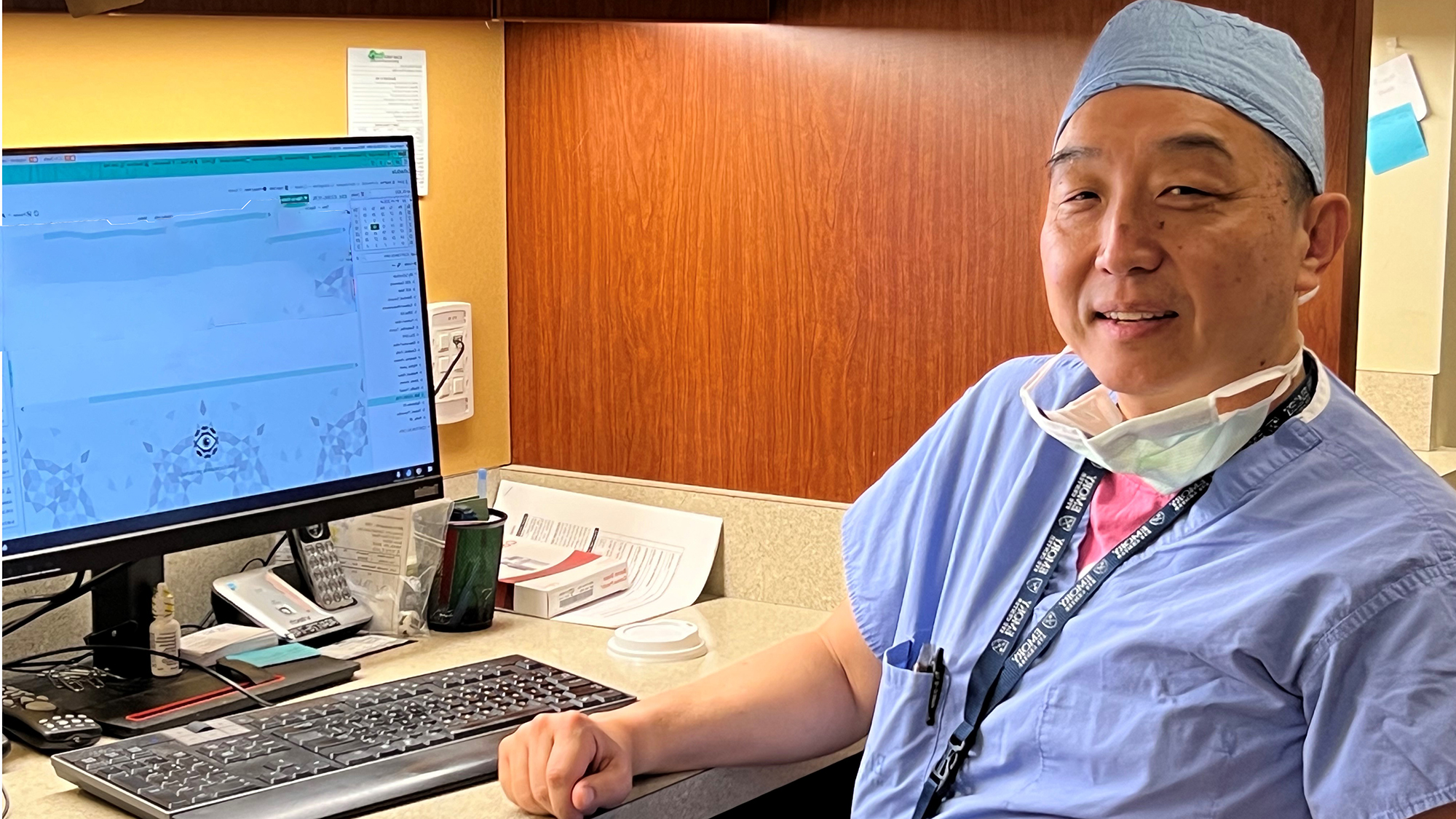Cataract, cornea, & external disease training
Cataract is a condition in which the lens in the eye becomes cloudy and hard. Emory Eye Center cataract specialists are trained to diagnose this condition in the general population as well as in those with a heightened risk: individuals over the age of 45, those with an eye injury, and those for whom medications may present vision complications.
Cataracts may cause blurred vision, sensitivity to light, glare and ghost images. If the cataract changes vision so much that it interferes with activities of daily life, it may need to be removed. Surgery is the only way to cure a cataract.
Surgical treatment of cataracts
Emory Eye Center surgeons are trained in surgical techniques that avoid the risks associate with injected anesthetics and which also promote rapid visual rehabilitation with minimal discomfort. Bandages are unnecessary, and bleeding around the eye is rare. Patients will usually go home without an eye patch and will immediately start using a variety of eye drops to help the eye heal after surgery.
Emory Eye Center surgeons are trained in the latest surgical technology, the femtosecond laser assisted LenSx® system. This precision-based system is bladeless, computer-controlled, and is performed to exacting, individualized specifications. The LensSx® allows complete customization for each patient, providing the best opportunity to improve vision after cataract surgery. In most cases, anesthesia is obtained with eye drops and minimal intravenous sedation. In rare cases, injections around the eye or general anesthesia may be required.
The removal of the cataract (phacoemulsification) is accomplished through using an ultrasound device that vibrates at a high frequency. The intraocular lens (IOL) is then implanted inside the eye—usually in the same space originally occupied by the patient's natural lens. Finally, the very small incision initially created is closed, usually without sutures.
Intraocular lens assessment
Because the calculation of the intraocular lens (IOL) power is not perfect, IOLs mrrectay not co astigmatism, and the optimal placement of the IOL is not completely predictable. Thus, Emory Eye Center clinicians are trained to assess the patient's suitability for different IOL options as well as their need for glasses or contact lenses after cataract surgery.
Toric Intraocular Lenses (IOL)
Patients with significant astigmatisms before cataract surgery may attain clear distance vision (without glasses) with Toric lenses. Clinicians in the cataract service are trained to assess patient suitability for these lenses and surgically implant them.
Multifocal Intraocular Lenses (IOL)
In appropriate candidates, the implantation of multifocal intraocular lenses (IOLs) can improve distance, intermediate, and near vision. They can also can reduce dependency on spectacles at all of these distances. Emory Eye Center cataract specialists are trained to both assess patient suitability and to surgically implant two types of multifocal IOLS: the ReZoom lens (AMO) and the ReSTOR lens (Alcon).
The Cornea Fellowship
Each year, the Emory Eye Center offers intensive training for ophthalmologists who wish to specialize in cornea and external diseases. Find out more about this one-year mentorship and rotation.


